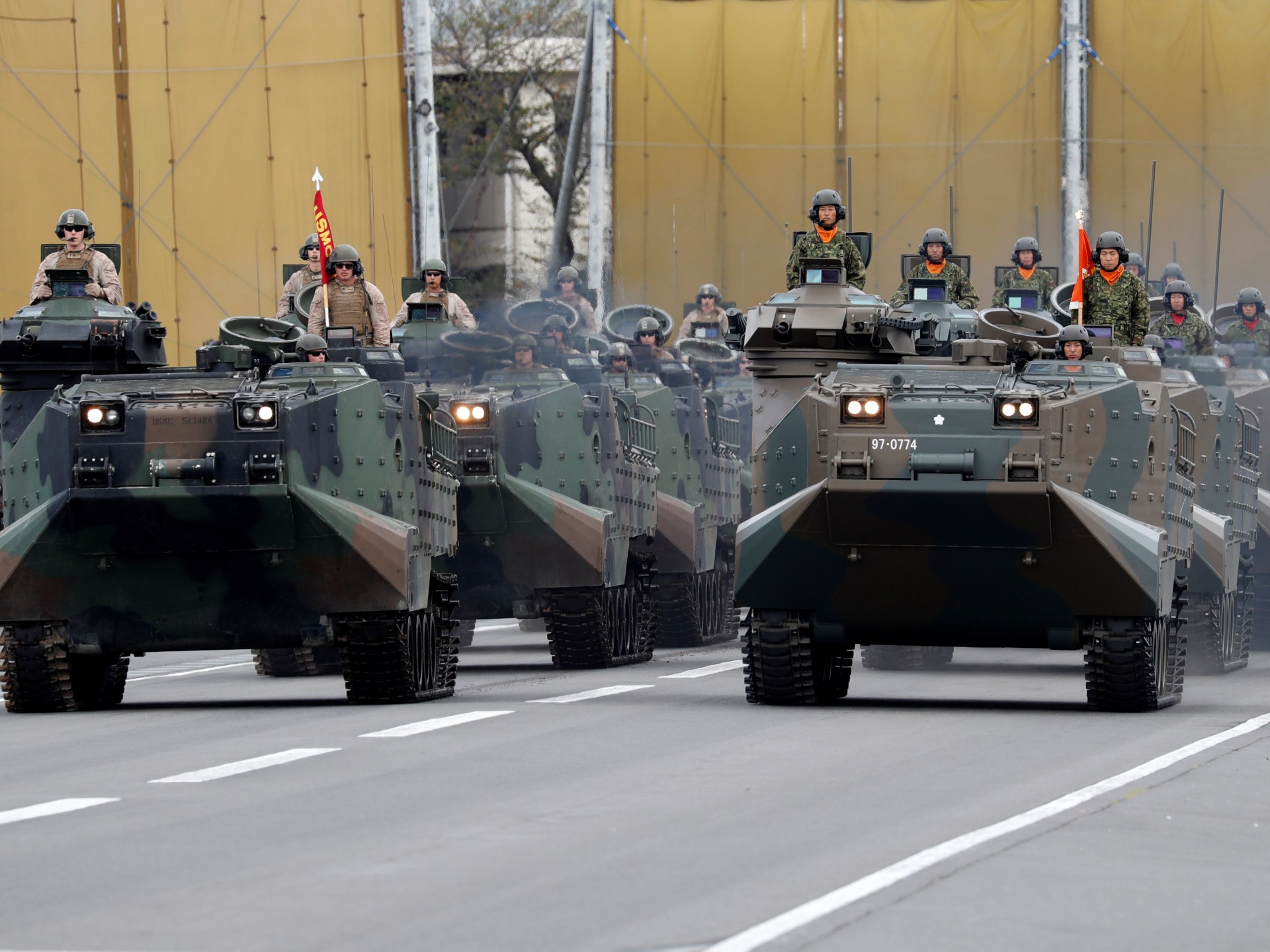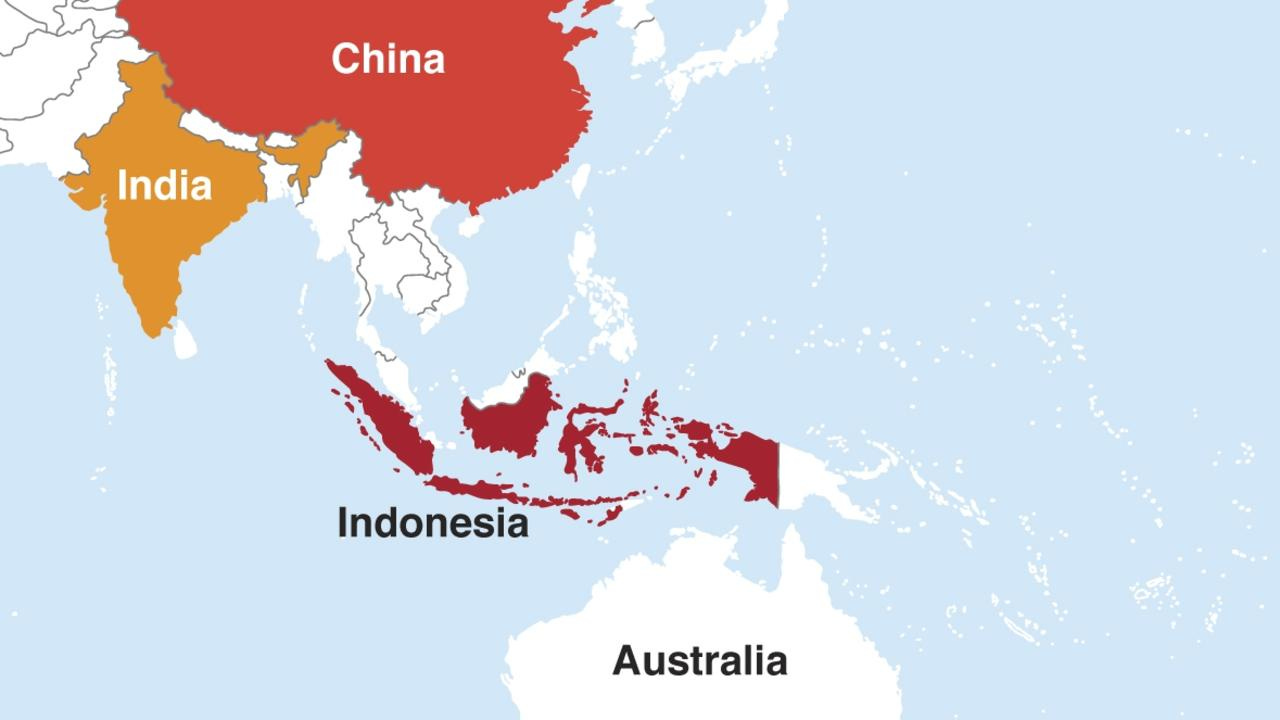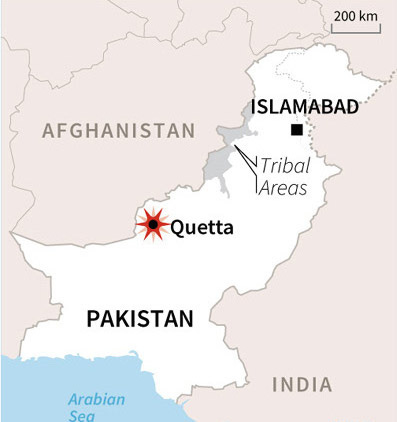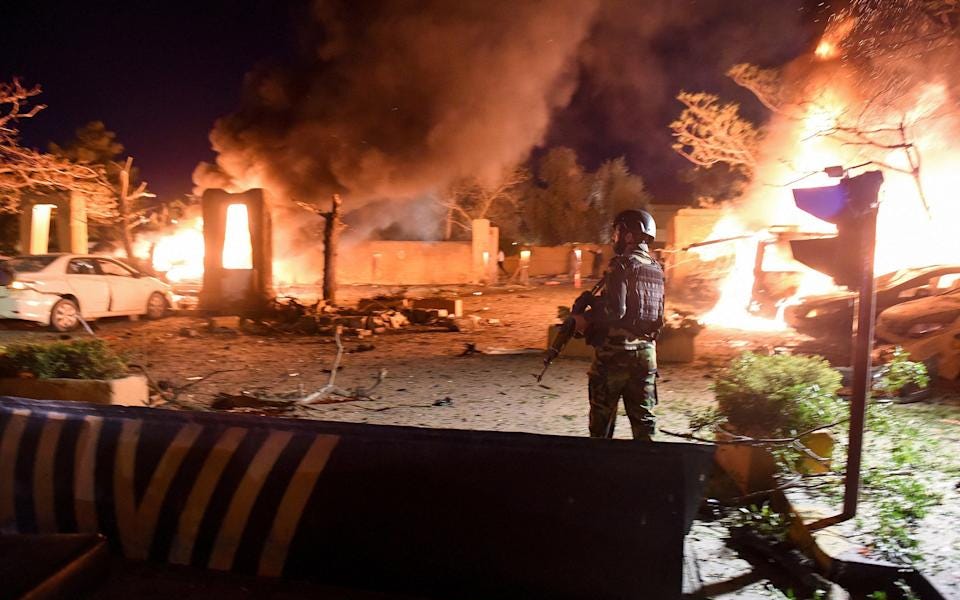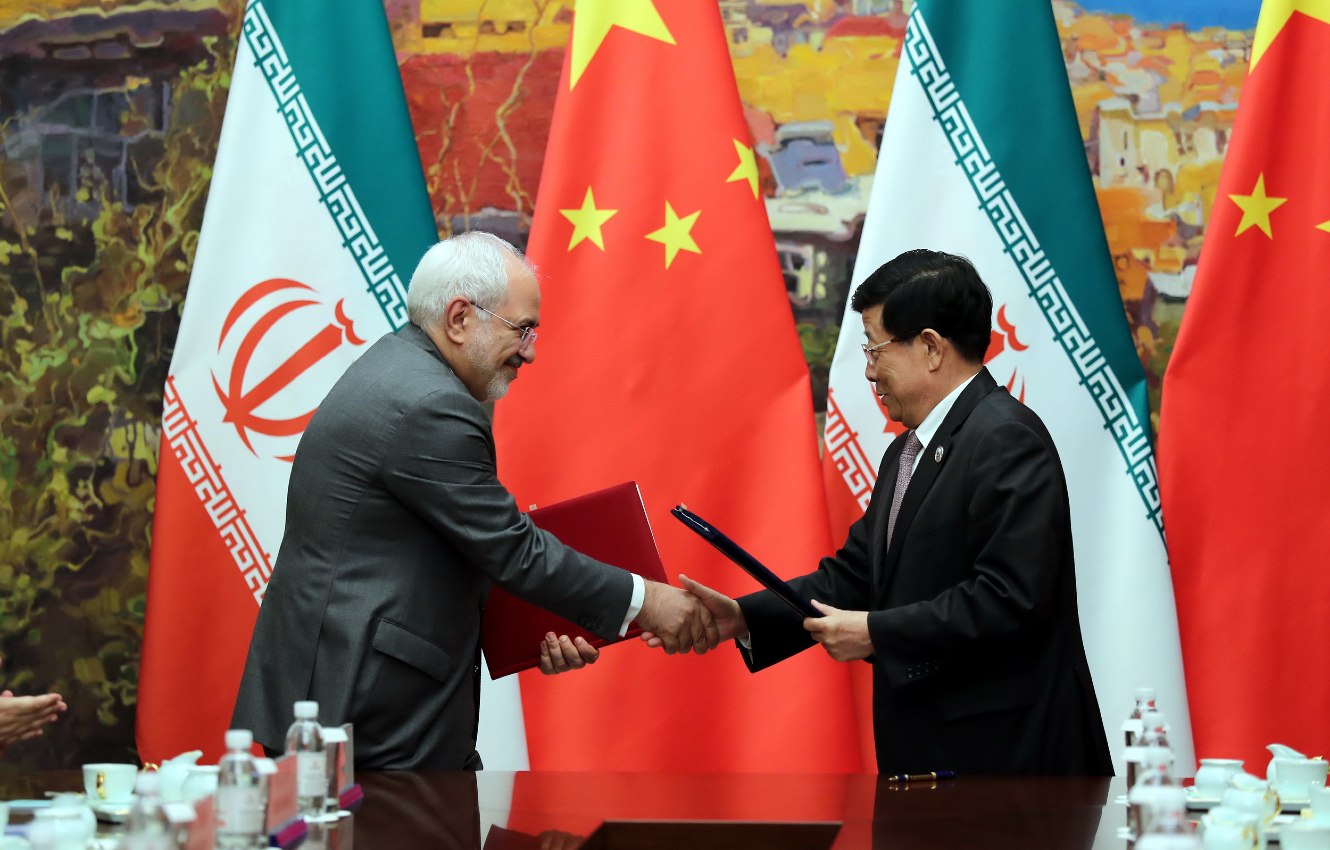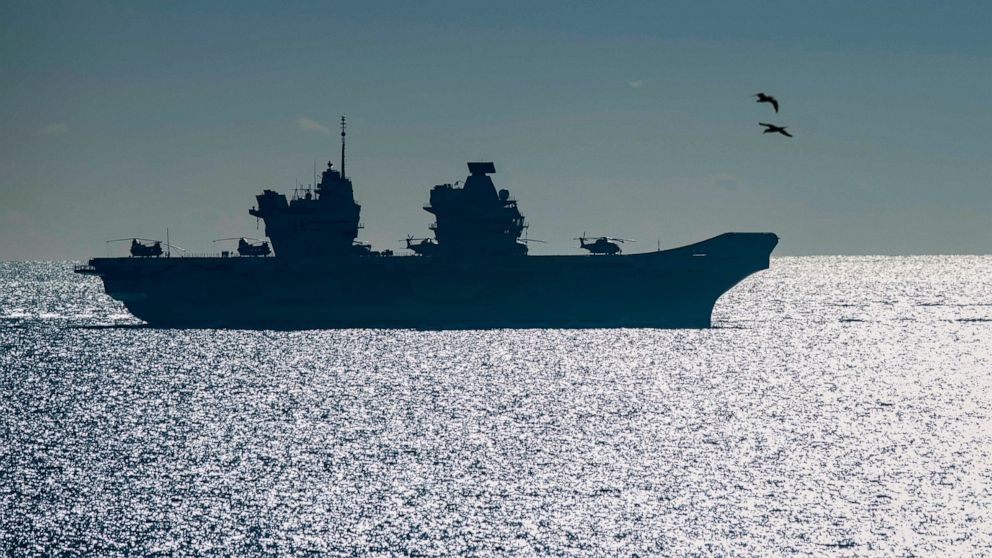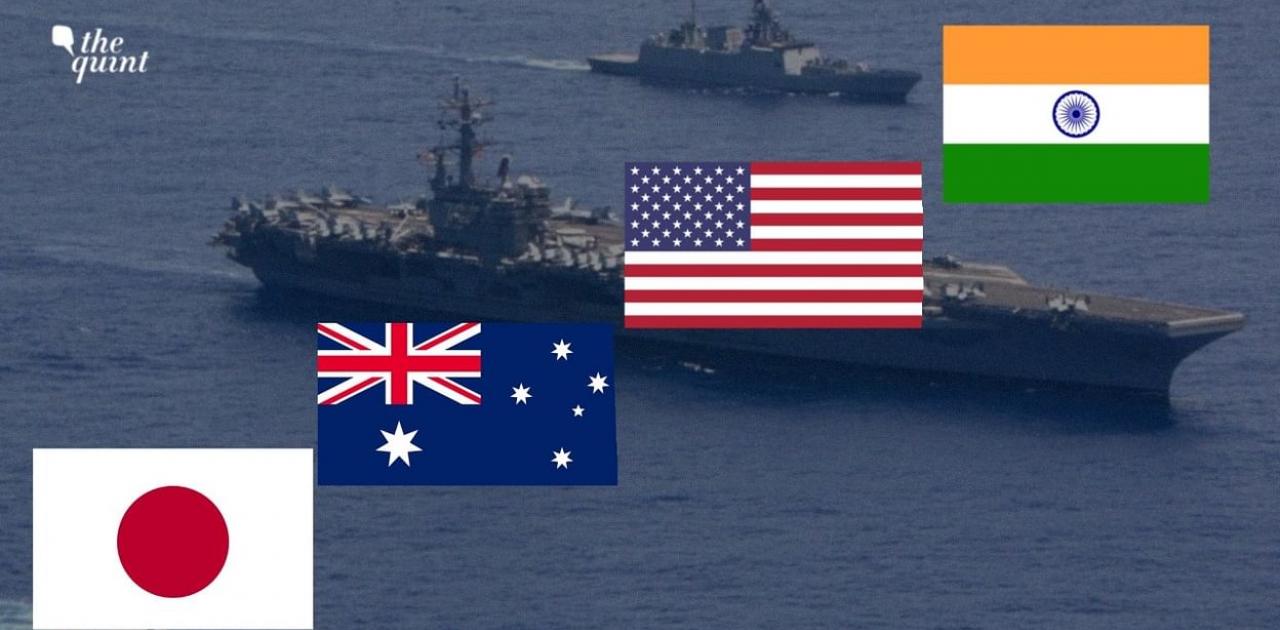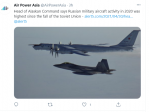jward
passin' thru
sg.news.yahoo.com
Frantic hunt for Indonesian submarine as rescuers hone in on radar contact
Sonny Tumbelaka
4-5 minutes
Indonesia's desperate search for a missing submarine and its crew of 53 honed in on a radar contact Friday, with just hours to go before the stricken vessel's oxygen reserves ran out.
The ramped-up hunt comes as Australia and the United States are set to join the search off the coast of Bali where the sub disappeared more than two days ago during training exercises.
Late Thursday, the military said it picked up signs of an unidentified object with high magnetism at a depth of between 50 and 100 metres (165 to 330 feet).
Ships equipped with sonar-tracking equipment were deployed in the hopes that the object could be the KRI Nanggala 402, which was equipped with oxygen reserves that could last until early Saturday, authorities said.
"We've only got until 3:00 am tomorrow (Saturday) so we're maximising all of our efforts today," said Indonesian military spokesman Achmad Riad.
"Hopefully there will be a bright spot."
But an oil spill spotted where the submarine was thought to have submerged pointed to possible fuel-tank damage, fanning fears of a deadly disaster.
There are also concerns that the submarine could have sunk to depths believed to be as much as 700 metres (2,300 feet) -- well below what it was built to withstand.
The German-built vessel was scheduled to conduct live torpedo exercises when it asked for permission to dive. It lost contact shortly after.
On Thursday, the US military said it would send airborne teams to help in the search, while Australia said two ships were on their way to assist.
Neighbouring Singapore and Malaysia have already dispatched ships that are expected to arrive at the weekend, including the city-state's MV Swift Rescue -- a submarine rescue vessel.
India said Thursday it had sent a ship to assist in the hunt.
- 'Very limited oxygen' -
But hopes of finding the crew alive were fading fast.
"If there is serious damage on the boat itself, it could potentially mean a few things, for example, there will be very limited spaces for the crew with very limited oxygen," said Collin Koh, a naval affairs specialist and research fellow at the S. Rajaratnam School of International Studies in Singapore.
"It could also mean that the reserve tanks for the oxygen might potentially be damaged as well. So it will further reduce the oxygen level."
Submarines are equipped to prevent carbon dioxide buildup, but if the equipment was damaged that could also pose a serious risk, Koh added.
"It's not just about whether there will be enough oxygen, but it's also about the level of carbon dioxide within the interior that could determine the fate of the submariners," he said.
While Indonesia has not previously suffered a major submarine disaster, other countries have been struck by accidents in the past.
Among the worst was the 2000 sinking of the Kursk, the pride of Russia's Northern Fleet.
That submarine was on manoeuvres in the Barents Sea when it sank with the loss of all 118 aboard. An inquiry found a torpedo had exploded, detonating all the others.
Most of its crew died instantly but some survived for several days -- with a few keeping heart-breaking diaries written in blood to their loved ones -- before suffocating.
In 2003, 70 Chinese naval officers and crew were killed, apparently suffocated, in an accident on a Ming-class submarine during exercises in 2003.
Five years later, 20 people were killed by poisonous gas when a fire extinguishing system was accidentally activated on a Russian submarine being tested in the Sea of Japan.
And in 2018, authorities found the wreckage of an Argentine submarine that had gone missing a year earlier with 44 sailors aboard.
Posted for fair use

 sg.news.yahoo.com
sg.news.yahoo.com
Frantic hunt for Indonesian submarine as rescuers hone in on radar contact
Sonny Tumbelaka
4-5 minutes
Indonesia's desperate search for a missing submarine and its crew of 53 honed in on a radar contact Friday, with just hours to go before the stricken vessel's oxygen reserves ran out.
The ramped-up hunt comes as Australia and the United States are set to join the search off the coast of Bali where the sub disappeared more than two days ago during training exercises.
Late Thursday, the military said it picked up signs of an unidentified object with high magnetism at a depth of between 50 and 100 metres (165 to 330 feet).
Ships equipped with sonar-tracking equipment were deployed in the hopes that the object could be the KRI Nanggala 402, which was equipped with oxygen reserves that could last until early Saturday, authorities said.
"We've only got until 3:00 am tomorrow (Saturday) so we're maximising all of our efforts today," said Indonesian military spokesman Achmad Riad.
"Hopefully there will be a bright spot."
But an oil spill spotted where the submarine was thought to have submerged pointed to possible fuel-tank damage, fanning fears of a deadly disaster.
There are also concerns that the submarine could have sunk to depths believed to be as much as 700 metres (2,300 feet) -- well below what it was built to withstand.
The German-built vessel was scheduled to conduct live torpedo exercises when it asked for permission to dive. It lost contact shortly after.
On Thursday, the US military said it would send airborne teams to help in the search, while Australia said two ships were on their way to assist.
Neighbouring Singapore and Malaysia have already dispatched ships that are expected to arrive at the weekend, including the city-state's MV Swift Rescue -- a submarine rescue vessel.
India said Thursday it had sent a ship to assist in the hunt.
- 'Very limited oxygen' -
But hopes of finding the crew alive were fading fast.
"If there is serious damage on the boat itself, it could potentially mean a few things, for example, there will be very limited spaces for the crew with very limited oxygen," said Collin Koh, a naval affairs specialist and research fellow at the S. Rajaratnam School of International Studies in Singapore.
"It could also mean that the reserve tanks for the oxygen might potentially be damaged as well. So it will further reduce the oxygen level."
Submarines are equipped to prevent carbon dioxide buildup, but if the equipment was damaged that could also pose a serious risk, Koh added.
"It's not just about whether there will be enough oxygen, but it's also about the level of carbon dioxide within the interior that could determine the fate of the submariners," he said.
While Indonesia has not previously suffered a major submarine disaster, other countries have been struck by accidents in the past.
Among the worst was the 2000 sinking of the Kursk, the pride of Russia's Northern Fleet.
That submarine was on manoeuvres in the Barents Sea when it sank with the loss of all 118 aboard. An inquiry found a torpedo had exploded, detonating all the others.
Most of its crew died instantly but some survived for several days -- with a few keeping heart-breaking diaries written in blood to their loved ones -- before suffocating.
In 2003, 70 Chinese naval officers and crew were killed, apparently suffocated, in an accident on a Ming-class submarine during exercises in 2003.
Five years later, 20 people were killed by poisonous gas when a fire extinguishing system was accidentally activated on a Russian submarine being tested in the Sea of Japan.
And in 2018, authorities found the wreckage of an Argentine submarine that had gone missing a year earlier with 44 sailors aboard.
Posted for fair use

Frantic hunt for Indonesian submarine as rescuers home in on signal
Indonesia's desperate search for a missing submarine and its 53 crew was focused on a signal from an unidentified object Friday, with just hours to go before the stricken vessel's oxygen reserves ran out.


Reuters
@Reuters
19m
Search for missing Indonesian submarine enters second day as neighbours offer help http://reut.rs/3sEJA1r
TimeforThorium
@vleeskroket
11m
Replying to
@Reuters
Hope #Indonesia is smart and already ordered #Boskalis and/or #Mammoet to be present ASAP to lift the #submarine and hopefully able to save crew. Don't make same mistake as with the #Kursk (too late). #Bali
View: https://twitter.com/Reuters/status/1385089766971031553?s=20

![The US Army, left, and the Japanese Self-Defence Forces (SDF) military vehicles parade during a ceremony at a Japanese base north of Tokyo in 2018 [File: Kim Kyung-Hoon/Reuters] The US Army, left, and the Japanese Self-Defence Forces (SDF) military vehicles parade during a ceremony at a Japanese base north of Tokyo in 2018 [File: Kim Kyung-Hoon/Reuters]](https://www.aljazeera.com/wp-content/uploads/2021/04/2018-10-14T045420Z_1919843737_RC1662245B50_RTRMADP_3_JAPAN-DEFENCE-1.jpg?resize=770%2C513)
